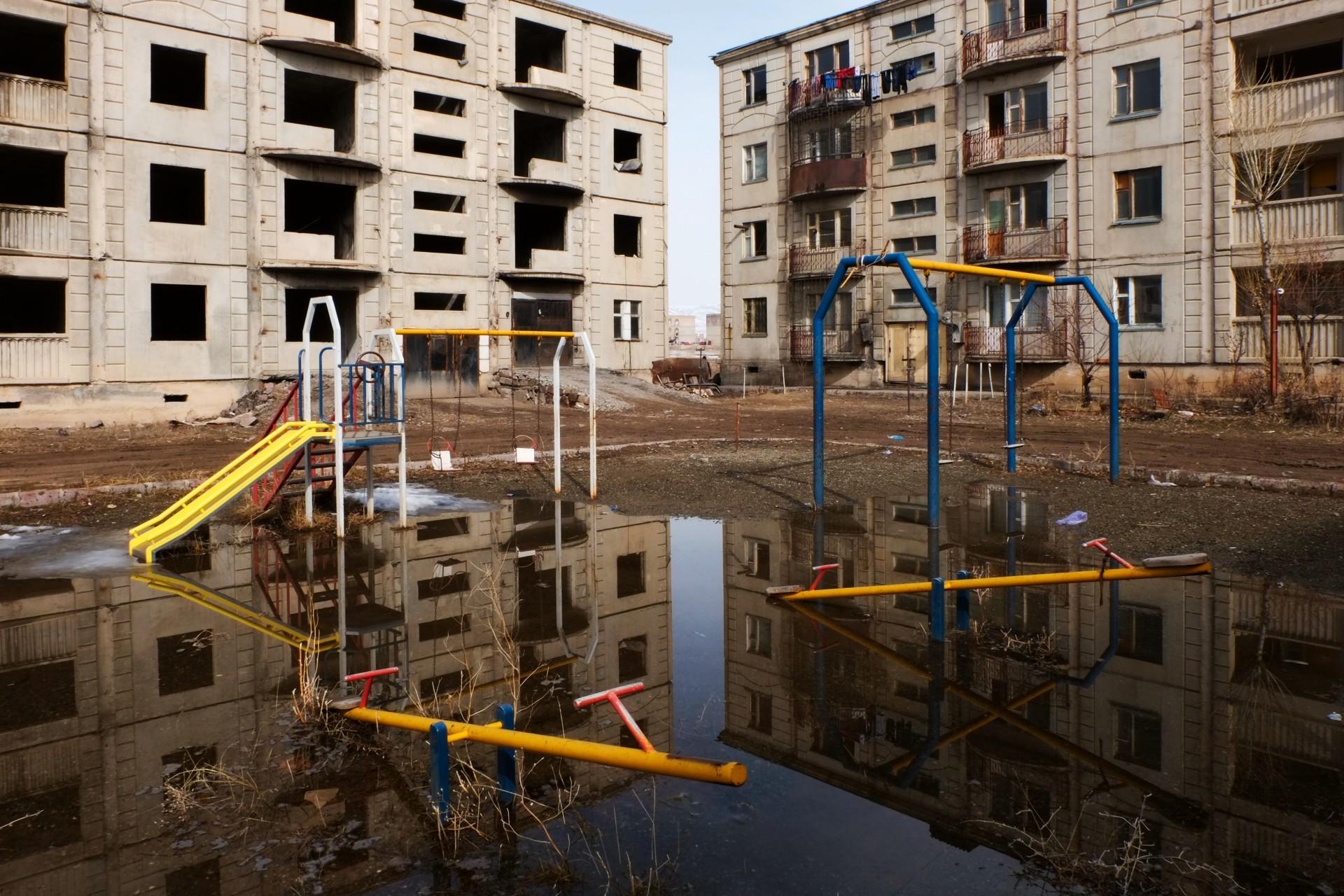
Gyumri: A City Split in Two By the Earthquake
Armenia's pavilion at the 2016 International Architecture Exhibition-La Biennale di Venezia was entitled "Independent Landscape".
It was an attempt to present critical analysis of the post-independence period landscape transformations in Armenia and to ponder upon the future, striving to get rid of the never-ending fuss regarding the conservation of architectural heritage.
During this period, within the project of “(Re) Visiting Post-Earthquake Gyumri”, we sought to initiate a public discussion on rehabilitation projects implemented as a result of the Spitak Earthquake.
With the below investigation by Vahan Ishkhanyan, and the photos taken by Katharina Roters and her students from the TUMO workshop, (who, by the way, lived in the newly-built district of Gyumri back in 2016), we are launching such a public discussion. A compilation of photos and an excerpt of Ishkhanyan’s article were previously published. The full article is being published for the first time.
Sarhat Petrosyan
Architect, planner and curator of the Armenian National Pavilion at the International Architecture Exhibition-La Biennale di Venezia
In the 20th century, two devastating earthquakes hit Gyumri. While the earthquake of 1926 ruined buildings and became a part of history, the earthquake of 1988 wrecked not only the buildings but also the spirit of the city.
Gyumri is Armenia’s second city, located 122 km to the north of the capital Yerevan, on the border with neighboring Turkey.
Experts agree that in contrast with the rest of the settlements in Armenia, Gyumri has a rich architectural and urban heritage, which remains intact and unspoiled. Until 1930’s Yerevan had an equally rich and comprehensive architectural heritage with a clearly designed general plan. However, throughout the Soviet times and then later during the years of independence it has been destroyed to such an extent that there are no separately standing districts but rather a number of lone buildings.
Although the two earthquakes, and especially the second one that totally destroyed the multi-storey buildings built in the 80s, have ruined the city to a substantial extent, the historical part of the city remains mostly intact.
From a letter by Vahan Cheraz
November, 1926
Today is the 12th day that we are faced with this devastating natural disaster. On the night of October 22nd the two strong shakes rocked the city and completely destroyed 8-10 villages of the region and, to make things worse, it had to happen before the winter broke off, causing enormous hardships for the residents. The tremors kept on going until yesterday. Yesterday with an interval of 10 seconds the earth shook strongly. Thousands of orphans sleep outside because they are too scared to go inside the buildings and rightfully so. The number of the tents that the Committee has is very limited, and those that they do have are not meant for the orphans. Together with Bajo we made a ... «կիւլիպէ» with boards and blankets and have found shelter under it. It is far from being comfortable, but what else should we do? If we don’t suffer who will suffer. Fortunately, though, while the nights are quite chilly, the days are warm and bright. It only snowed once and for a short time. However, winter will be in its full right just in a couple of days.
The situation in the villages is far more gruesome. Many of the villages have been destroyed completely leaving many victims and the tremors still continue. Help comes from everywhere, though. It should be said that the Committee too in a number of villages delivered substantial assistance. Aside from the irreparable loss of human lives, the inhabitants of the villages if not immediately then in a short period of time will find themselves in the same if not better conditions as now.
The underground homes that are being built fast and in big numbers are not much worse than their previous housing. What really matters is that their living conditions and habits change, but the developments in that area are not very encouraging.
Whatever it is, the disaster was large scale, unexpected and discouraging. For many who already are not very excited to live in this unattractive region this will become a trigger to leave and only a small number of residents after spending winter in Tbilisi, Georgia and other places will return to Armenia. The city, the second city of Armenia (given that it is the only one) requires complete rebuilding and once the earthquake becomes a more or less regular phenomenon only few will agree to build more or less substantial buildings and this will open the doors for the construction of light, mobile housing. From the point of view of living conditions this perspective is durable in case measures are taken to resolve two major problems. The first problem is robbery that has become a recurrent and common practice among the population and the second is the insufficient amount of fuel. However, the administration, factories, schools, hospitals etc. will definitely require construction of proper buildings.
If it were up to me, I would adapt to these new housing conditions that resemble a camping more than anything else. Since I started sleeping outside my health has substantially improved. The room that we have just found after a long search overcoming thousands of obstacles, was rather damaged and unsafe, because it was far away from the second floor door. I wanted to give up the room altogether and to build a small cozy wooden house, but wood is very expensive, so now I am thinking to build a Dug-ont.
(The letter was published in “Inknagir” literary journal)
The rich heritage mainly refers to the the city that was built in the 19th century.
Although archeological excavations show that the area of Gyumri was populated as far back as 5 thousand years ago, and was a settlement also in the middle ages (Kumayri then Gyumri), the Gyumri that we know was built in the 19th century by Russian colonialists, when as a result of the Russian-Persian war of 1804-1805 Gyumri was taken by the Russian Empire and in 1837 was named Alexandropol as a tribute to Russian Tsar Nikolai I wife Alexandra ( and in 1924 was renamed into Leninakan to honor the leader of the Russian revolution Vladimir Lenin, and then after the declaration of independence in 1992 it was renamed Gyumri).
In 1976 Sashur Qallashyan was appointed chief architect of Gyumri and initiated the elaboration of the new general plan of Gyumri. One of the key principles of the new general plan was the preservation and maintaining of the cultural heritage.
“We realized that the administrative borders of the city could not be expanded since the city was surrounded by agricultural arable lands, hence the city should expand at the expense of those neighboring areas, where the lands were not of much value. This meant building small satellite towns outside the main city,” says 80-year-old Qalashyan, who was the city’s chief architect for 13 years. “At the same time,” he continues, “we should also consider the historical heritage. We designed the general plan according to which the city was to develop in the direction of Beniamin village (to the south). With respect to the preservation of the historical heritage we studied the experience and practices of other cities, visited Novgorod, Baltic Republics, Tbilisi and learning from their experience elaborated a new concept for the preservation of historical heritage. According to this plan all of the old town was declared Kumayri historical-cultural reserve museum. In 1980 the Government approved the administrative borders of the museum. The project was moving forward very fast, to such an extent that architects were organizing bus tours to look around, until the time when the earthquake happened.”
The hardest blow of the Spitak earthquake of the 7th December 1988 came on Gyumri: 17 out of 24 thousand victims were residents of Gyumri, according to the official data 526 buildings, among which educational institutions, factories, residential buildings etc. were destroyed, and around 26 thousand families lost their housing.
The earthquake destroyed mainly the buildings built in the 80’s, whereas the old city remained standing and as of today there are around 1100 monument buildings still preserved in Gyumri.
“The buildings collapsed mainly because requirements of seismic safety were neglected”, claims Qalashayn. “The soil in Gyumri is rich in clay, multi storeyed buildings should not be built on clay soil. The old buildings remained standing because they were not high, whereas the multi-storeyed buildings collapsed. Another reason was that the regulations were loosened up, the state was placing the order and every year they were demanding that we spend less and less on cement and reinforcement metal, add to this that some of it was also being stolen and eventually there were buildings that were built with sand, even a strong enough wind could bring those buildings down.”
The SSAR declared that the disaster zone would be restored in three years time. Tempted by this the Armenian authorities artificially widened the area and volume of the disaster zone by destroying damaged but still operational buildings.
They refused to restore the destroyed districts, because those areas were used to host the temporary shelters of those who were left without houses (until the present day there are more than 60 temporary shelter districts).
At the same time the completed general plan of Gyumri elaborated by Qalashyan’s team was put aside and a new, completely opposite concept was developed. It was decided that the new districts would be built not on seismically more secure rocky grounds of Beniamin, but on the arable lands of the adjacent Marmarashen, where the ground rich in clay and where underground waters were running.
“Marmarashen had a flat surface, whereas Beniamin was more hilly, it wasn’t flat, and the Russians were not used to building on hilly surface, so they pressured Armenia,” says Qalashyan. “At that time Souren Haroutunyan was appointed first secretary of the communist party of Armenia, I met with him personally, took him to Beniamin to show around. I could feel that he understood, but his hands were tied. He was under pressure, plus the pan Armenian movements (Pan Armenian movement that was one of the most influential nationalist movements in the last years before the collapse of the Soviet Union, came to power in 1991), demanded that the Russians stop the construction and leave, and that we would do everything on our own. But in that environment it was impossible to do anything.
Approximately 400 acres of arable lands of Marmarashen were removed and instead two districts of town houses Ani and the Austrian district were built. After the collapse of the Soviet Union in 1991 the builders left, leaving behind dug out foundations and unfinished construction sites instead of the removed arable lands.
The disaster zone turned into a source of enrichment at the expense of human tragedy.
Soviet builders left behind huge numbers of construction machinery in Gyumri, including 427 cranes, 44 concrete mixing machines etc..
New authorities did not elaborate any new plan and allowed the plundering of the construction materials and machinery.
The Isles of the City
In 2000s Mush 2 district was built next to Ani district. However, the unfinished construction sites of 1990s still remained scattered over 200 acres of the territory. In order to provide the homeless families with housing the construction of some of these unfinished housing islets was completed.
One of such islets is the Shirakatsi district that became inhabited in 1997 and which consists of three 4 storey buildings and is about one kilometer away from the nearest grocery store and school. The buildings are numbered 67, 68 and 69. But what about 66? The residents point to an unfinished building closing up their courtyard that they try to protect from looting. “We are those who should guard these building so that no one destroys them and pieces of cement do not fall on the kids,” asks 25 year-old Samvel Paskevichyan.
The other unfinished buildings look as if they were nibbled: the poor crack the cement with hammers to take out and sell the metal.
“We live in the jungles, you can’t go out after 8, or else you’ll be attacked by wolves”. There are about 10-12 families living in the three buildings, the others have locked up their houses and left and those who stayed regret that they abandoned their temporary shelters and moved into the apartments. “We would move back into temporary shelters if they gave us one, would have been much better, the kids walk to school with plastic bags on their feet and if it rains we are all stuck in mud”, says Anahit Karapetyan, a mother of four.
The authorities refuse to acknowledge that there are people living in this district. “No one lives there”, says the head of the urban development department of Shirak region Albert Margaryan. In reality, people do live there.
“How many people live there? Those are the buildings of the railway, those buildings were transferred to the railway department, explains Margaryan the reason why the district is out of the focus of their attention, they completed the construction of those buildings, distributed the apartments and populated the houses all on their own and at their expenses. Later because of being in some isolation they faced problems with gas, water and the buildings were gradually deserted and plundered. The project was never realized fully.”
However, how should the people who have nowhere else to go continue living in the “unfinished project”?
“Initially the government planned to build a huge complex in Marmarashen that would become home to 60 thousand families, but managed to build only Mush district, the Russians left, then the railway came and told the municipality to give them the incomplete buildings. They said it is almost done, give us the buildings we will complete the construction and give the apartments to the residents. So, we gave those buildings to that organization, they should take care of the residents,” says Margaryan.
The other isle is Sheram district with 10 inhabited buildings: it is further away than Shirakatsi district close to Marmarashen village. Compared to Shirakatsithis one is more convenient and has a school and a grocery store.
The part that was supposed to become Marmarashen district looks as if after an air strike with lone buildings scattered across the huge territory with up to 1 km separating the buildings from each other.
The state considers that the restoration of the disaster zone is complete. However, it still owes 69 families that lost their homes because of the earthquake and who supposedly until the end of 2016 should have received certificates of purchased housing, which serve to cover the purchase of an apartment of the families’ choice by the state.
Although approximately 8000 people still live in temporary shelters, neither the local government nor the central government plan to involve in new housing development.
“Who should we build for?” asks Margaryan. He reveals that the government is realizing projects within the framework of social housing fund in Dilijan and Maralik, where they already completed the construction of five residential buildings. However, in the city where the number of people needing housing is the highest there are no such projects.
The incomplete buildings will slowly collapse because of the weather conditions. “There aren’t many buildings left, in the past 27 years they gradually fell into decay, were destroyed and were plundered, there is no need to build these buildings. Completion of these buildings would require more resources than building new buildings from scratch” claims Margaryan.
Domiks: the wound that does not heal
Until 2000s there still were 17 thousand people living in temporary shelters in Gyumri, today there still are approximately 3000 people (2700 according to local authorities and 3000 according to NGOs).
Officially 26711 families lost their homes in Shirak region, 24159 of which in Gyumri. The number of built apartments is approximately the same. As of 2015 through different projects 22782 families residing in Shirak received new apartments, 21001 of which in Gyumri.
Until 2000 the state was building houses for the families that suffered from the earthquake at the expense of budget allocations and through the assistance of various organizations (according to official data in the period from 1989-2013 16981 apartments were built in Shirak region, of which 16040 in Gyumri). Later, the Armenian branch of the Washington based “Urban” institute launched a different model of operation, i.e. instead of building housing for the homeless they would provide those in need with a certificate worth the price of a dwelling (DPC- dwelling purchase certificate). Using these certificates those in need of housing could purchase affordable dwelling of their choice. On the one hand, this program allowed to take the responsibility for public housing development off the hands of the authorities, on the other the empty houses of the emigrating city were put into use. In the period from 2000-2004 “Urban” distributed 4838 DPCs in Shirak, of which 4091 in Gyumri. Later they passed the realization of this model to the government, which in the period from 2005 to 2015 distributed 770 DPCs.
The head of the “Shirak Center” NGO Vahan Toumasyan reveals an interesting paradox. Before the earthquake the population of Gyumri was 260 thousand people, according to the most recent 2015 official data the population of Gyumri is 118 thousand and based on non official estimates around 80 to 90 thousands. This means that while the overall population decreased by 2 to 2.5 times, and almost all of those that suffered from the earthquake have either received apartments or left the country, the districts with temporary shelters remained the same in size, if only are a little less dense.
Among those who still live in the temporary shelters not many are those who suffered from the disaster. According to Toumasyan those who still live in the temporary shelters or are homeless fall into the following four groups: the first group are those 1100 households that after the earthquake did not submit required documents to be included in the list of people to receive new housing or have lost private houses, hence the state refuses to recognize them as victims of the earthquake. The second group are those households that have received new housing, but not being able to support themselves had to sell the apartments and return to temporary shelters. The third group are expanded households, where after the children married and had their own children the apartments became to small to fit everyone and they had to purchase temporary shelters. This group also includes the poor of Gyumri who simply need a roof over their heads. And the forth group are those residents that moved to Gyumri from other settlements.
Representatives of at least 3 of the 4 abovementioned groups live in one of the temporary shelter districts on Vazgen Sargsyan street.
The poor have purchased those temporary shelters that have been gradually falling apart throughout the recent 28 years and that the state was supposed to demolished after providing residents with proper housing. Instead, the “shelter demolishers” by selling the shelters fill in their own pockets and by doing this they on the one hand contribute to the preservation of the temporary shelters, but on the other they prove to be useful for those who need a roof over their head.
For the 26-year-old newly married Artyom Manoukyan buying a temporary shelter was the only way to provide his family with dwelling. He says, that after the earthquake his mother and five brothers were provided with new housing, however after marrying and having his own two children it became impossible to live in the same house for all of them. He purchased the 8-meter-long and 3 meters in width trailer with thin walls from the “shelter demolishers” for 300 thousand AMD two years ago and moved to Vazgen Sargsyan street, receiving an address from the municipality- trailer 224/492. Next to the trailer he has put together a sort of a covered space from junk materials that they use as a bathroom and dug a hole a bit further away to serve as a toilet.
In northern Gyumri, where the temperatures in winter are 20-30 below zero everything freezes in the shelter with thin plank walls if the fire goes out and in summer because of the tinplate roof it is melting hot inside.
“It is unbearably cold in winter. Last winter I had to burn loads of my and kids’ clothes to warm up a little, I burnt all the shoes and boots I could find. And then there was Toumasyan’s assistance”, says Artyom (“Shirak” center distributes fuel to the residents of the shelters in winter).
He returned from Russia only a few months ago and with the money that he was able to earn there he managed to pay back only part of his debts. The 800 thousand loan that he took from the bank two years ago with the fines and percents adding up doubled. He cannot pay it back and now he received a notice from the court. Vahan Toumasyan says that many of the residents of the shelters have outstanding bank loans that they are unable to pay back.
“I am a capable, hard working guy, there just aren’t any jobs. If there was a factory I would work there with pleasure and take good care of my children, and would pay all the state payments. The nurse injects my wife one, two, three days. And I am a man, I am so ashamed of myself, I feel so bad that I cannot make the payment. This life is unbearable, if I were alone I would leave and go to Russia, would live under a wall somewhere and still would be happier under the Russian’s arm”.
Once he hears the question about receiving a new apartment he gets upset and angrily responds that he will not give away the shelter that he has worked so hard to make a home. “They will take my shelter once they give me an apartment, they will destroy it and turn into wood fuel, I don’t agree with that, I worked so hard, put together every dime to build this. I didn’t do all that for them to destroy it and use as wood fuel”.
Rafael Petrosyan, 32, and his family live in the neighboring trailer already for 10 years. He bought it from “demolishers” for 800 USD and moved to this trailer neighborhood. Rafik is an orphan, when he was 18 he left the orphanage and married. His wife is also an orphan from one of the villages near Gyumri, they have two children.
“We went to the villages, looked after cattle, worked as guards and loaders, I scratched together enough cash to buy this trailer”. This for him is permanent housing. “I left the issue of the apartment to God.” Both husband and wide are sick, Rafik suffers from epilepsy, but did not manage to register for disability pension. Their only income is the 28 thousand AMD poverty benefit.
68-year-old Lida Haroutunyan is the only employed resident of this trailer neighborhood, she works as a janitor, she cleans the streets and receives a 59 thousand AMD monthly salary from the mayor’s offices. She was born in Spitak, used to live in Yerevan until two years ago when she moved to Gyumri and brought along her mentally disabled sister from Spitak – Anahit. “This (the trailer) I bought by myself, didn’t eat, didn’t drink, scratched together enough to pay 350 thousand AMD and buy this trailer”.
The 9-meter trailer is their permanent housing, the old women has abandoned any hope to be noticed and to ever receive a new apartment. Their home in Spitak was destroyed during the earthquake. “My sister used to live near the train station in Spitak, she had a home, but it was nothing like a home. During the earthquake the house was destroyed and only the kitchen remained standing, so we lived in the kitchen without water, or toilet, I had nothing”.
Under a covering next to Lida’s home lives Aghunik Petrosyan. When it rains she finds shelter under the destroyed “Kamaz” truck. She does not have anything: “I don’t have an address, the registration in my passport says 224/492 Vazgen Sargsyan street, but there is no house there, it burnt down. My sons died, my husband died, my parents died, I have no one”.
What once used to be a temporary shelter for these residents became permanent housing.
“Before, there was no difference whether you lived in a shelter or in a building, the whole city was in the same state, and the ones who lived in the trailers were waiting to move into an apartment building” says Toumasyan, who for more than 10 years has been realizing various programs to assist the residents of the trailers. “After completing the housing program, the trailers remained in their places and the trailer neighborhoods remained as they were and the people who live here are the most disadvantaged, sick, poor people. As a result, the city was divided into two communities: those who live in normal houses and the ones who now were from enclaved ghettos. They have their own rules of life, very few of them continue to study after school. 80% of those who are exempt from the army service due to health issues are from the trailer neighborhoods. Humidity, rats, widely spread early marriages since there isn’t much else left to do except to get married, to divorce and to reproduce carelessly”.
So why then after the completion of the housing program of the disaster zone in Gyumri the neighborhoods of temporary shelters remained in place?
Besides poverty, Toumasyan mentions one more additional reason- the restoration program of the disaster zone itself. The locations of the temporary shelters and the restored buildings should be reverse: temporary shelters should have been built outside the city, and the city should be rebuilt where it used to be. That way, when the beneficiaries would receive their new housing no one would want to stay in the temporary shelters outside the city, and those neighborhoods would gradually vanish. However, the complete opposite was done: temporary shelters where built in the city, mainly in the parks and green zones, whereas the new buildings were built outside the city.
“Since there wasn’t a compactly organized temporary borough outside the city, everyone put up their shelter wherever they pleased and the Russian construction organizations built their camps where they saw fit. The Soviet Union collapsed, they left and the city was left in a total mess and confusion. In a course of time the infrastructures were restored, healthcare institutions, schools, kindergartens were rebuilt. The only outstanding issue was the housing and also parks and cultural centers were not restored (there is only one park -Gorka, and even that one turned into a restaurant zone). All the green zones of the city, i.e. the stadium, dozens of parks, the friendship park, students’ park, all of these big and little parks were covered by temporary shelters and tents. They used to say that they would build the city in two years and move the residents back, but in 25 years they only now managed to resolve the housing for the ones who suffered from the earthquake, meanwhile the temporary shelters became a culture”.
The authorities cleaned only the downtown of Gyumri from temporary shelters, which in the opinion of Toumasyan, also was carried out only because it was in the interests of officials. “About 10-15 years ago they realized that they cannot resolve the problem of temporary shelters, but they also did not want to leave trailers in the city center, so they either paid off the residents of the shelters on the pavements of the city center or demolished and moved to other parts of the city by force,” says Toumasyan. “They cleaned up Sayat Nova, Leningradyan streets because they would sell those spaces at high prices, whereas the Savoyan area (a temporary shelter neighborhood on the outskirts of the city) was left the way it was, because no one would buy those lands”.
Toumasyan considers that restoration of parks is one of the most important problems for the city, which will be possible only after the areas that used to be parks are cleaned from trailers. “No wonder the city is covered with dust, the streets are cleaned everyday, but it does not make much difference, because there are no green zones.”
Due to charitable donations in a period of 4 years “Shirak” center provided the residents of temporary shelters with 50 apartments of which 17 in 2016 alone. They mainly provide housing to those, whose trailers are in the areas that used to be parks to create possibility for the restoration of the parks. Vacated trailers are demolished to avoid repopulation. There are two more organizations that carry out projects to provide housing to the residents of temporary shelters.
Toumasyan claims that the authorities were expecting that the migration program realized by Russian government would prompt the residents of temporary shelters to immigrate thus making it easier to resolve the temporary shelter issue. Instead, families with higher income immigrated and the poorest remained in place. Nevertheless, according to the National Statistic Service (NSS) the second highest migration rate, after the capital Yerevan is that of Gyumri.
Gyumri is the poorest city of Armenia. According to NSS Shirak region has the highest poverty rate in the country, where 44% of the population live below the line of poverty (the average for the entire country being 30%), with child poverty at 49, 6% (with the average for the country being 34%).
With the decrease in the population number there is an increase in mortality rate. Based on NSS data, in 1986 in Gyumri with a population of 260 thousand there were 1184 deaths (19410 countrywide), and 30 years later, in 2015 in Gyumri with a population of 118 thousand 1490 deaths were registered (countrywide 27878). This means that in 2015 300 more people died in Gyumri compared to 1986. Except for the year of the earthquake the highest mortality rate registered in Gyumri was in 2010: 1661 deaths.
In two years in a row there were more deaths in Gyumri than there were births: in 2001 there were 1406 births and 1446 deaths, and in 2002 1520 births and 1543 deaths.
In a course of 30 years the number of births decreased by almost three times. In 1986 there 4419 births (countrywide 81192), in 2015 1622 births (countrywide 41763). The number of marriages also decreased by almost 3 times. Against 1814 marriages in 1986 (countrywide 31465), there were 631 in 2015 (countrywide 17603). However, the number of divorces remained almost the same in1986 223 divorces, in 2014 212 and in 2015 149.
Poverty as a result of poor community governance
Nevertheless, the per capita budget of the city of Gyumri is less than that of Yerevan, which according to Levon Barseghyan is discrimination.
For example, the per capita allocation from the budget generated from state subsidies and income in 2016 in Yerevan equaled 20677 AMD and in Gyumri 15441 AMD.
The head of the “Communities Finance Officers Association” NGO Vahan Movsesyan claims that the reason for this inequality is the legislation.
“The budget of local governments is generated from a number of sources, one of which are taxes and duties, such as the property tax, the land tax. Obviously, and the international practice also comes to prove this, given the starting conditions some of the communities will be more wealthy since having more land and property means more taxes, and the others will be poorer, because if they have less land and property they will subsequently collect less taxes. One of the main objectives of the state is to patch up this difference, so that every citizen receives the same services and in all communities financial means are sufficient to ensure the living standards. This means that the budget of the country should subsidize poor communities. There is an elaborated mechanism, which operates all over the world, i.e. the mechanism of financial adjustment, that is to say if you are poor, because you have a more limited base of land and property, and the other community is more wealthy, it means that the state should somehow compensate your poverty to adjust it to my wealth. In Armenia the law of financial adjustment is in force since 1999, and is known as subsidizing, but instead of mitigating the difference in wealth it stipulates equal allocations to everyone. We have mountainous, remote communities with limited resources, that do not even have property (only property over 3 mln. AMD is taxed), this means that these villages should receive money. Still the acting financial adjustment algorithm only partially takes this into consideration; the idea of giving less to the wealthy and more to the poor is absent altogether, it still operates on the principle of per capita allocation to everyone”.
According to Movsisyan the subsidies allocated to the communities two years ago were 46 billion AMD, only 25% of which was separately distributed to the poor communities, the rest was evenly distributed between everyone.
According to the data of the state register on the number of population as of 2016 Yerevan received 13 bln 430 mln 355 thousand AMD for 1 mln 72 thousand residents, which means 12, 527 AMD per capita. In Gyumri, according to the data of the state register, for the population of 160 thousand 728 residents the allocation was 1 bln 906 mln 750 AMD, i.e. 12 237 per capita. This means that the poor Gyumri receives almost the same amount as the more wealthy Yerevan.
This year the draft amendments to the law on “Financial adjustments” has entered the National Assembly, which stipulates that the same amounts of allocations as in 2016 will be distributed to the communities and when budget increases, the larger portion will be distributed between poor communities. “The condition is set as follows: whatever happens Yerevan should receive no less than 13 bln, only after that condition is met, if there are additional funds, Yerevan will receive little from these additional funds”, says Movsisyan.:
Besides the adjustment subsidies, financial allocations are made from the state budget to different communities for road construction, construction, maintenance and other works based on the wishes of the government.
Dozens of streets of Gyumri, that together are approximately 180 km long, are destroyed and in a very bad condition. According to the estimates of a member of the Council of Elders of Gyumri Levon Barseghian in order to restore the streets of Gyumri 80 mln USD are required, however out of the 3 bln AMD (7 mln USD) budget of Gyumri only 1 million can be spent on roads (36% of the budget is used to cover the expenses of the Mayor’s office and the rest goes to the education).
Albert Margaryan claims that in fact the government does pay attention to the streets of Gyumri and in contrast to the past a large portion of the works on the streets of Gyumri was carried out due to allocations from the state budget. “Of course, it is not like in Yerevan, where they make over the streets every two years, but there is a certain improvement compared to what was going on 10 years ago. The condition of the secondary streets is really bad, though.”
In order to repair 12 main streets of Gyumri the government is launching a 23 million euro project, 14,6 million of which are a loan from the European Bank for Reconstruction and Development, and the rest according to Mayor Balasanian will be a grant.
Community budgets are mainly spent on preschool education, musical education, and refurbishing of the neighborhoods. In wealthy Yerevan kindergartens are free of charge, whereas in poor Gyumri the monthly fee for each child is 7 thousand AMD.
“If asked why do you spend more money on Yerevan and less on Gyumri, the Government will come up with some explanations, that Yerevan is the capital etc. But they can also simply say because we want to. This area is not regulated by legislation in anyway,” claims Vahan Movsisian.
He also brings examples from different countries, where the local self-government bodies have access to 30-45% of public finances, whereas in Armenia only to 8% (public finances are the amounts generated from the incomes of the state and community budgets.). “Schools, police, healthcare, social security agencies all these should belong to the communities, so that when elections come, people look at who provides best services and elect them. This means that approximately 40% of communities expenditure should be carried out by local self-governance bodies” says Movsisian, “but Armenia everything is taken away from the community itself, only 8% is left, which makes it obvious that local self governance is not a serious institution here”.
At the same time, the government is moving just in the opposite direction and weakening the communities even further. Based on the Government Decision of April 26, 2016 it was proposed to donate the water supply and sanitation systems that were the property of the communities to the Government. None of the communities refused the proposal since all of the heads of communities and councils are controlled by the ruling Republican Party. Gyumri, too, passed over its water supply systems. Levon Barseghian says, that during the session of the Gyumri Council he was the only one to vote against this donation.
In Conclusion
Although the Governemnt already completed the restoration of the disaster zone, 28 years after the earthquake Gyumri continues to live the disaster: the poorest city in the country, with a year by year decreasing population, and divided into many layers. On the one hand the old Gyumri with the 19th century buildings, districts mounted after the earthquake, on the other hand the slums of temporary shelters of the extreme poor
Two key urban development directions for Gyumri could have been the housing development for the people living in temporary shelters and the restoration of the Kumayri reserve. However, no projects to realize these directions are envisaged. The obstacles hindering the development of Gyumri are linked to the key economic and political problems of the country in general, one of which is the weak local self-governance system, which deprives Gyumri and other communities of the opportunity to make their own decisions and to decide for themselves.
 Videos
Videos Photos
Photos
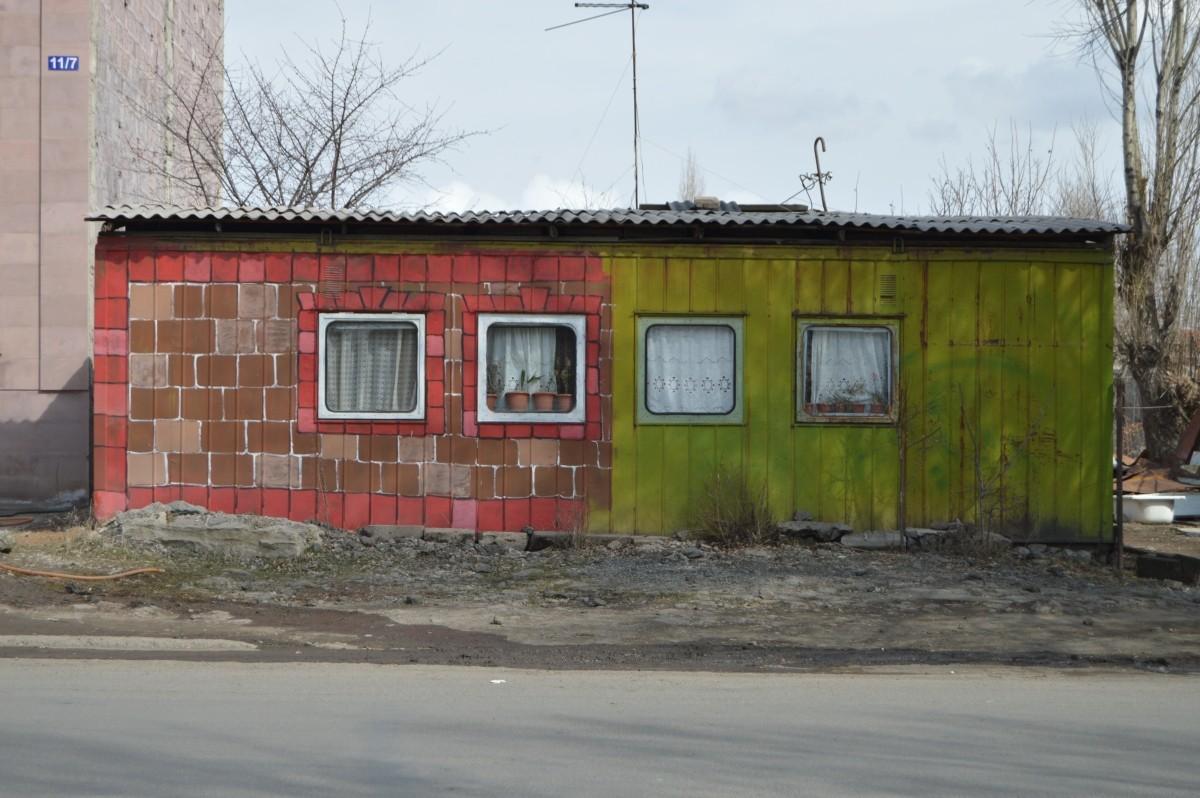

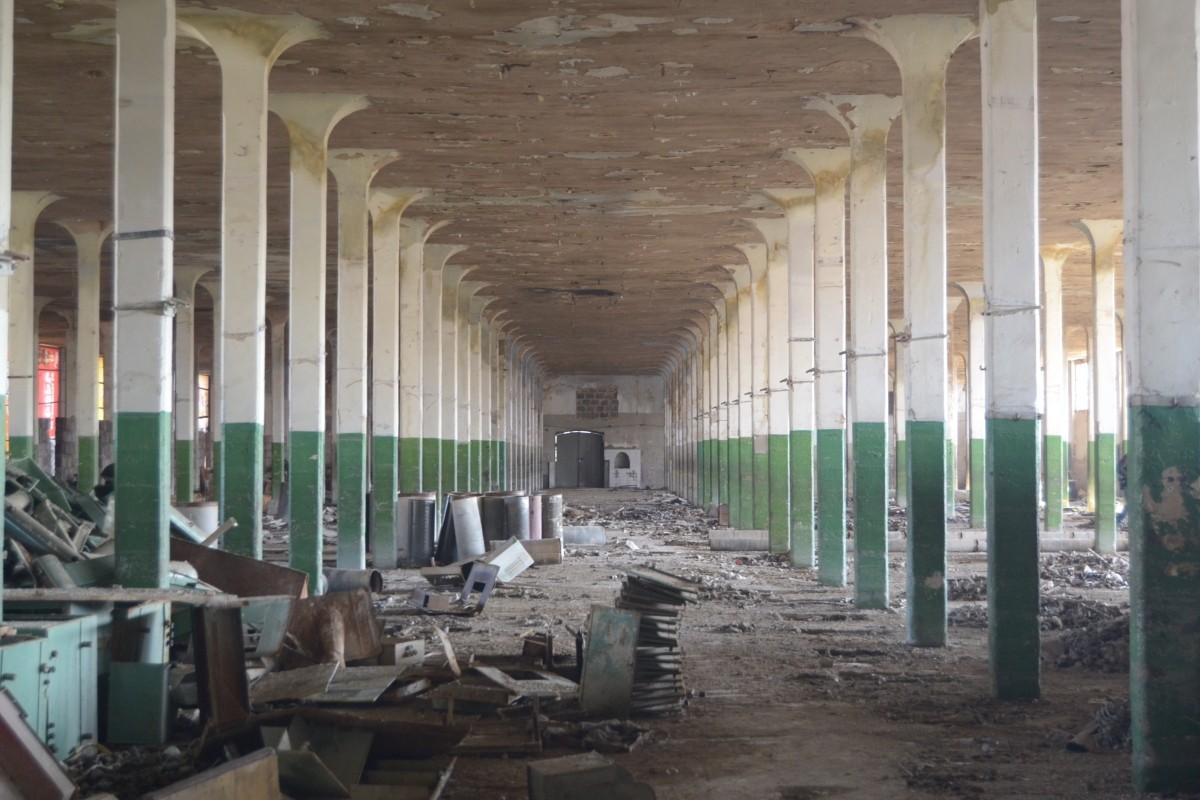
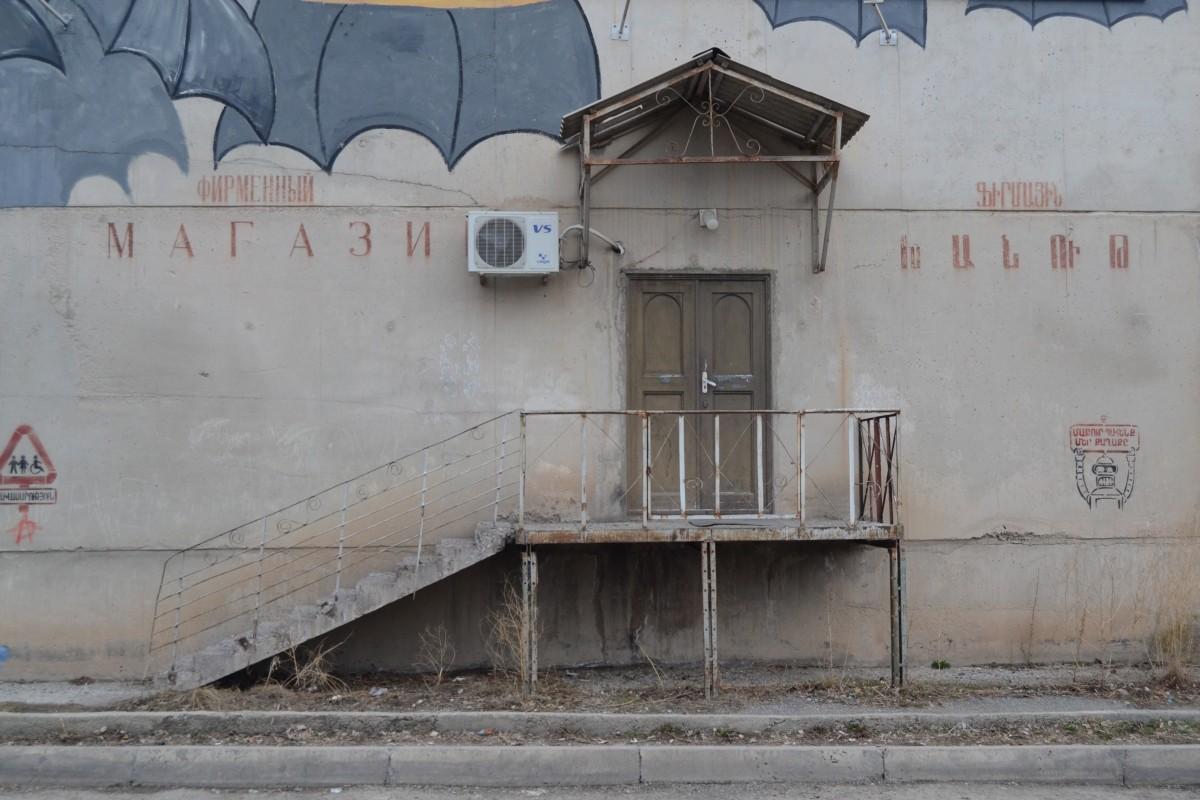
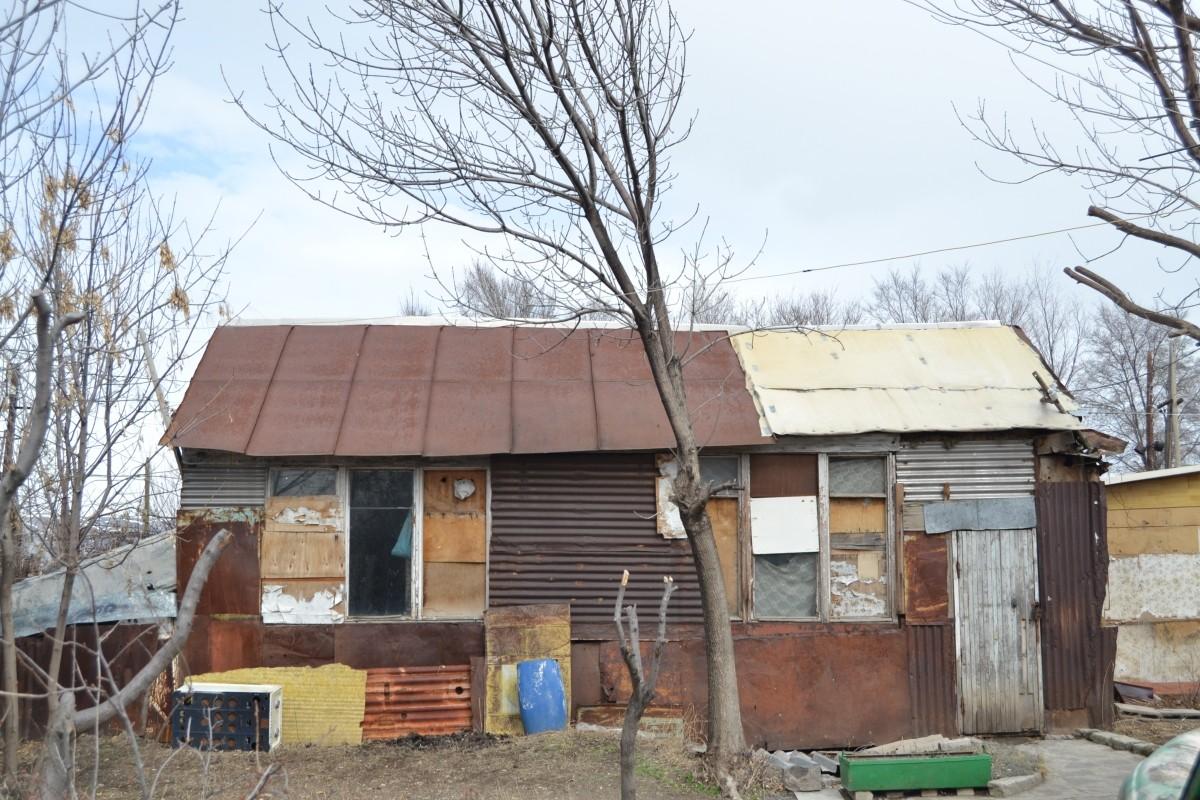
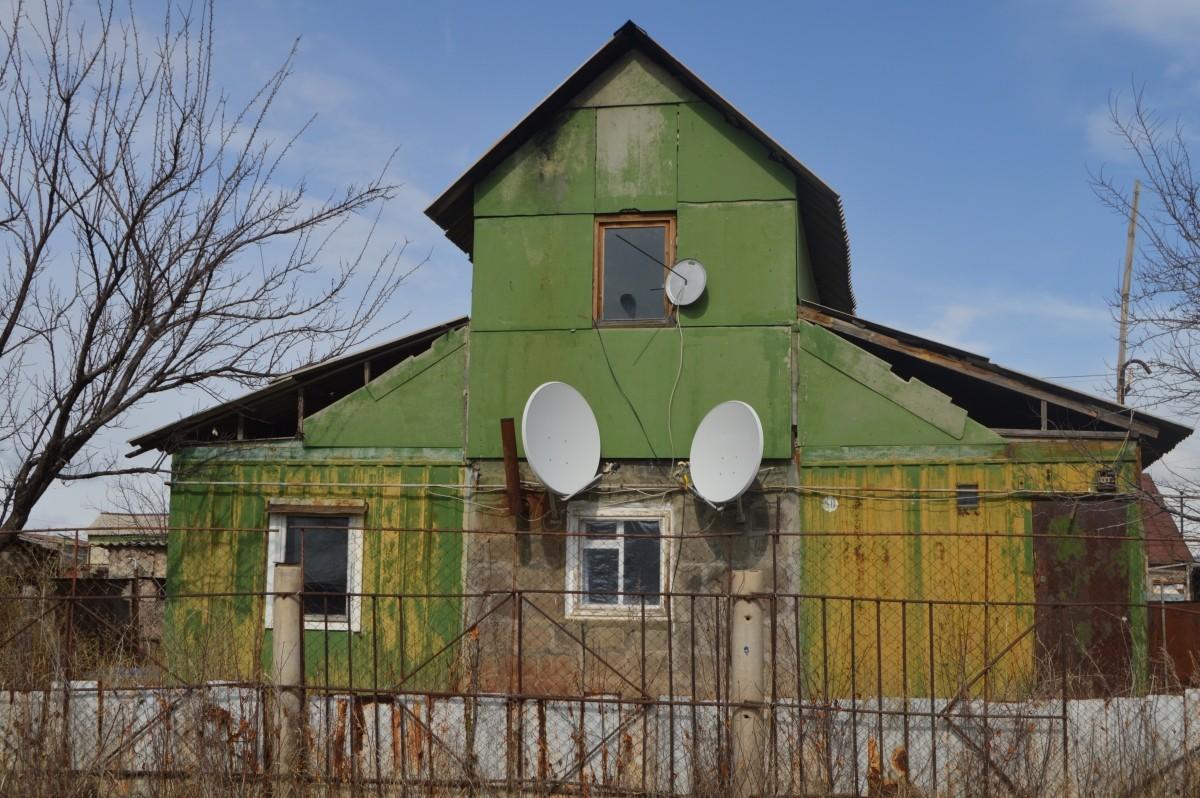
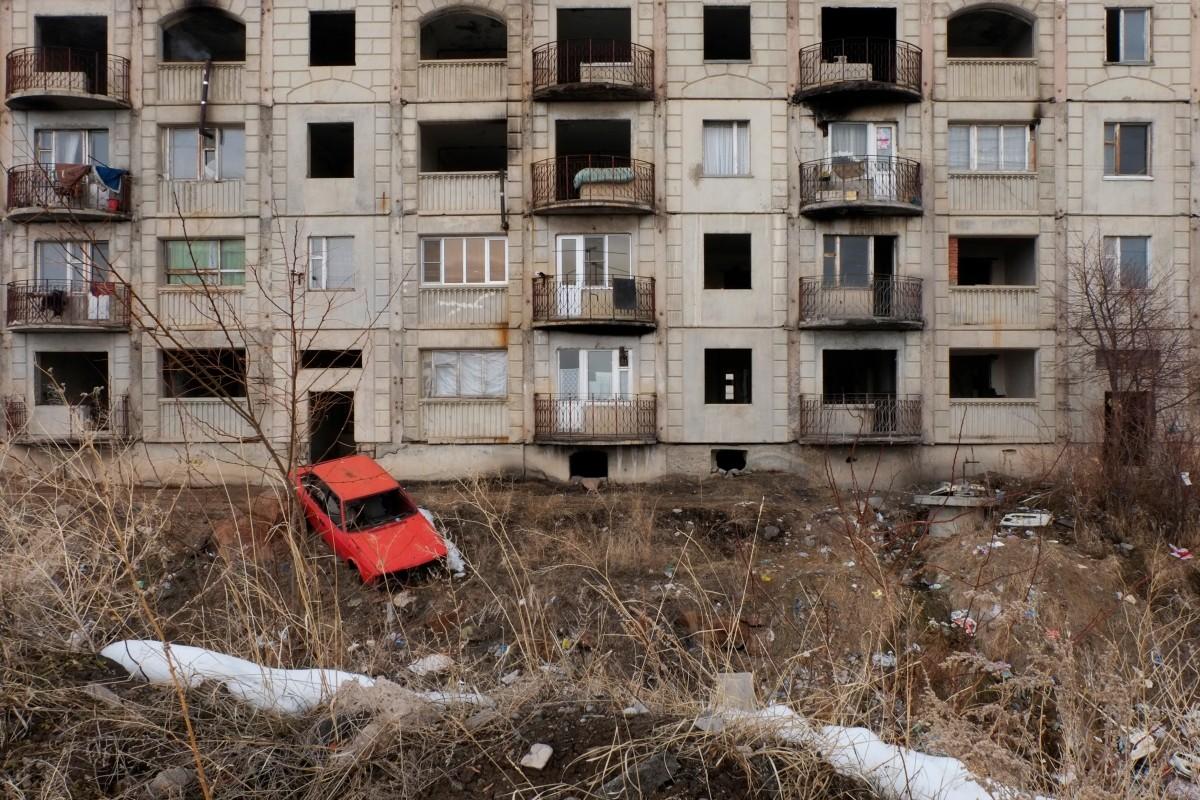
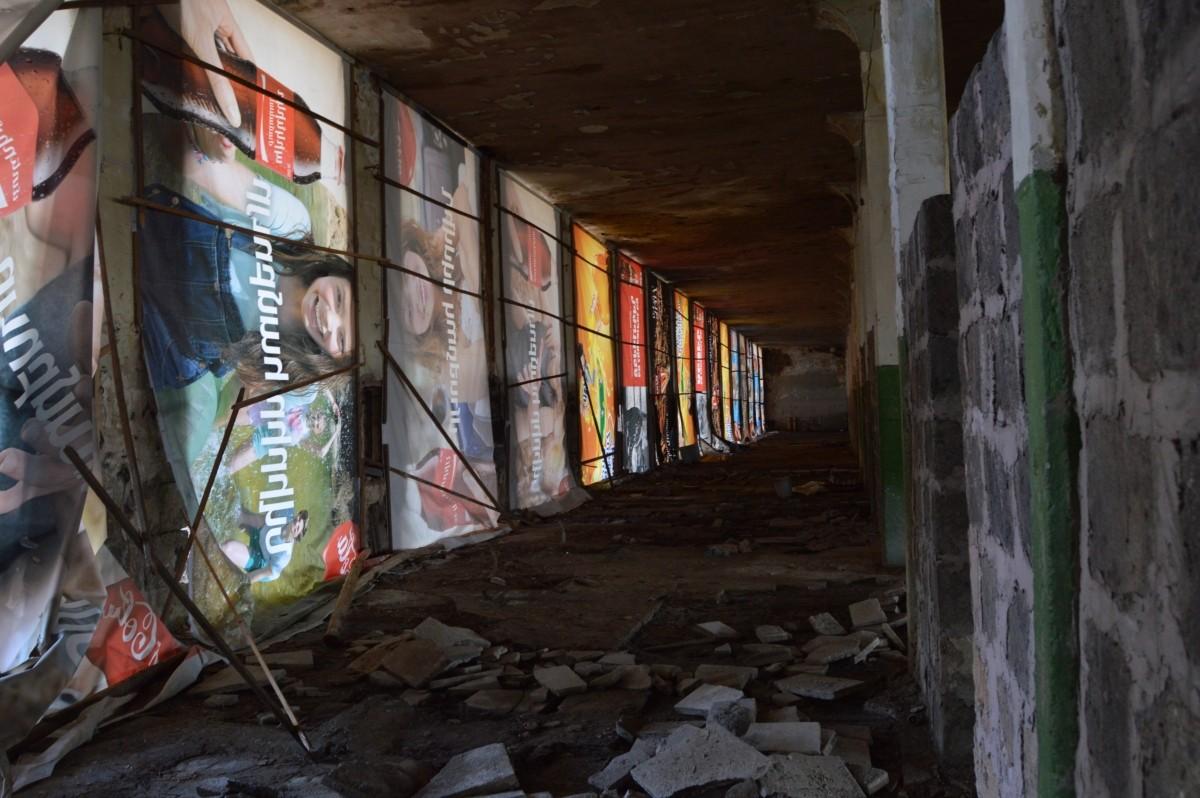
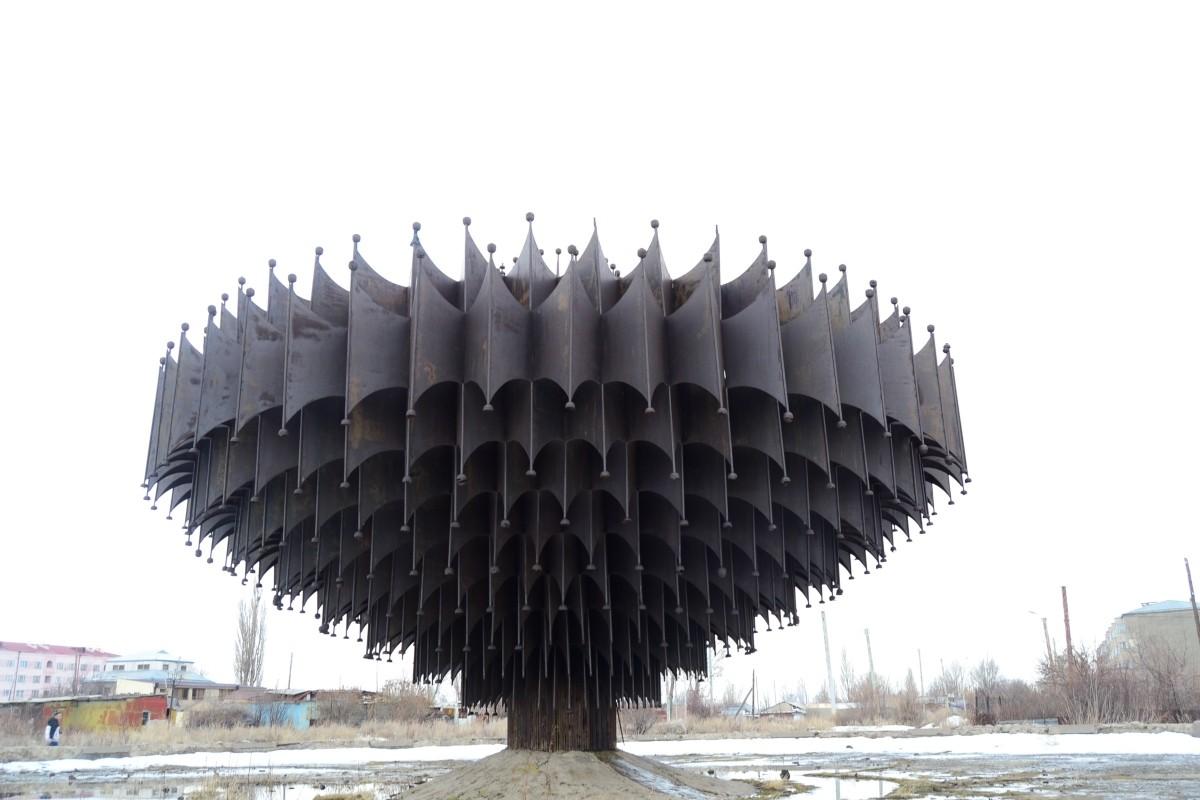


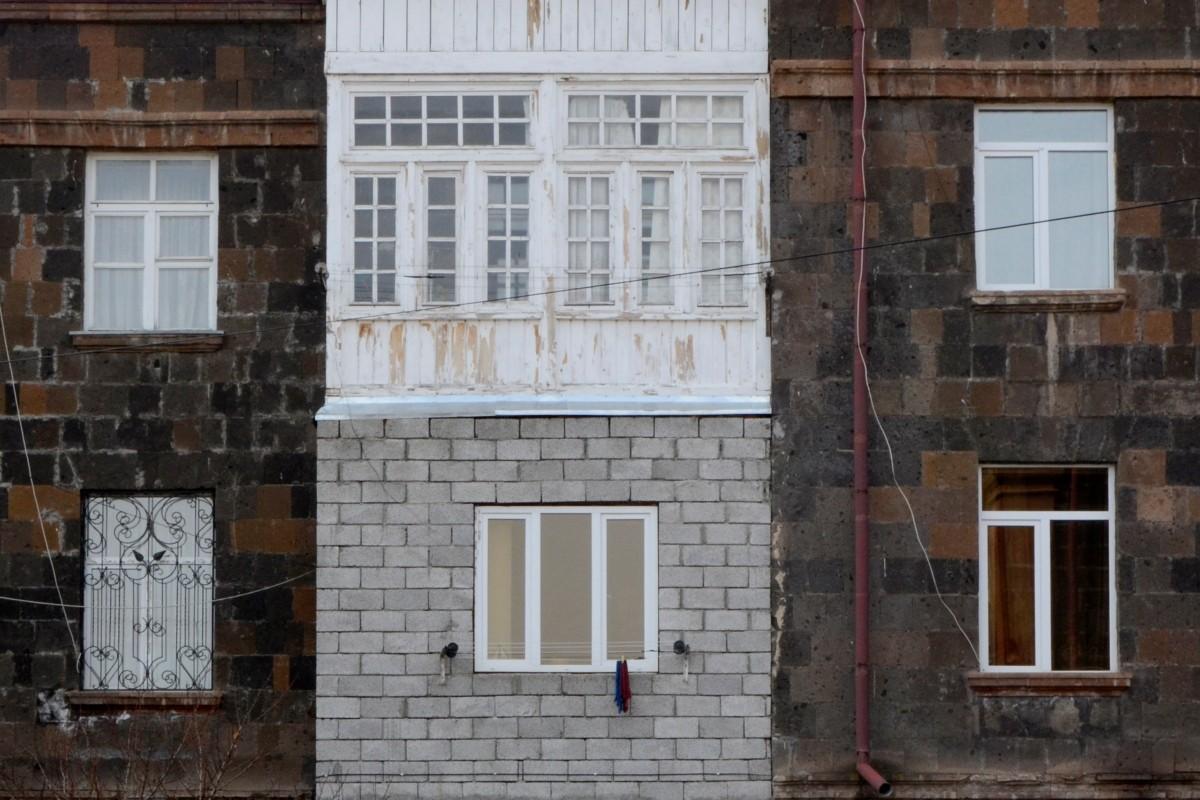

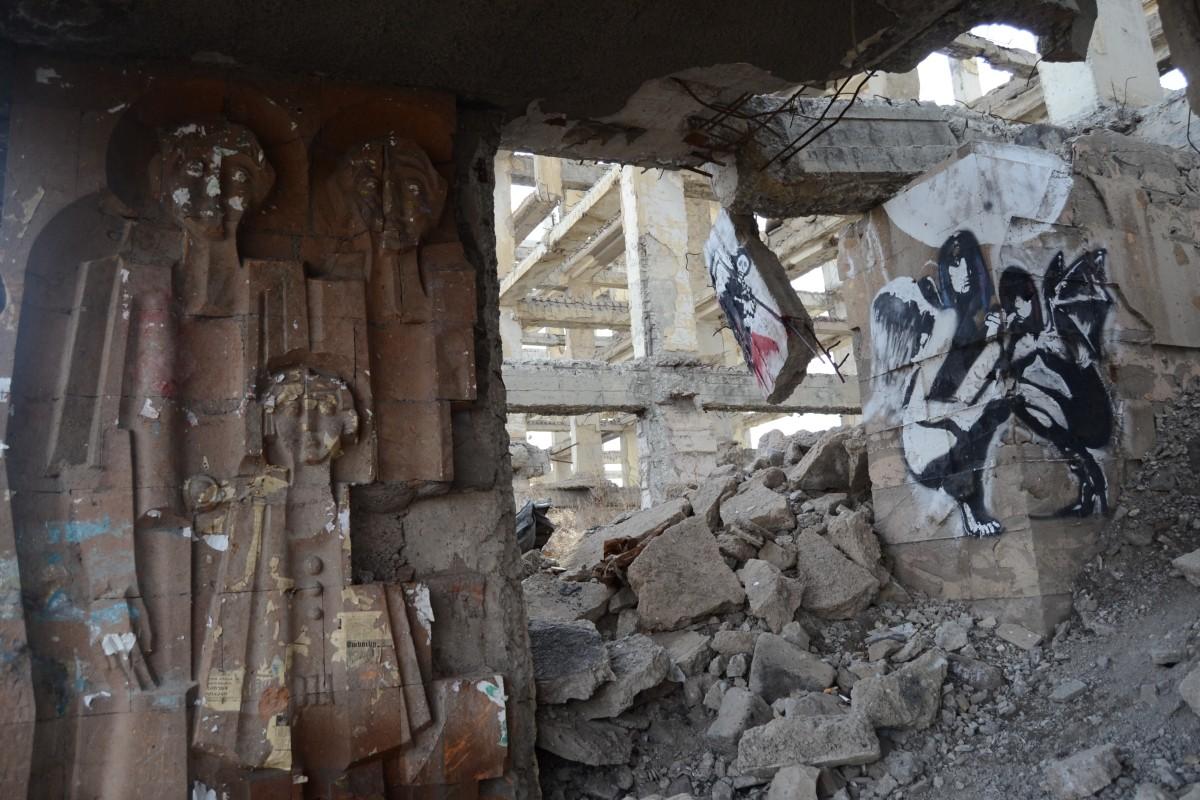

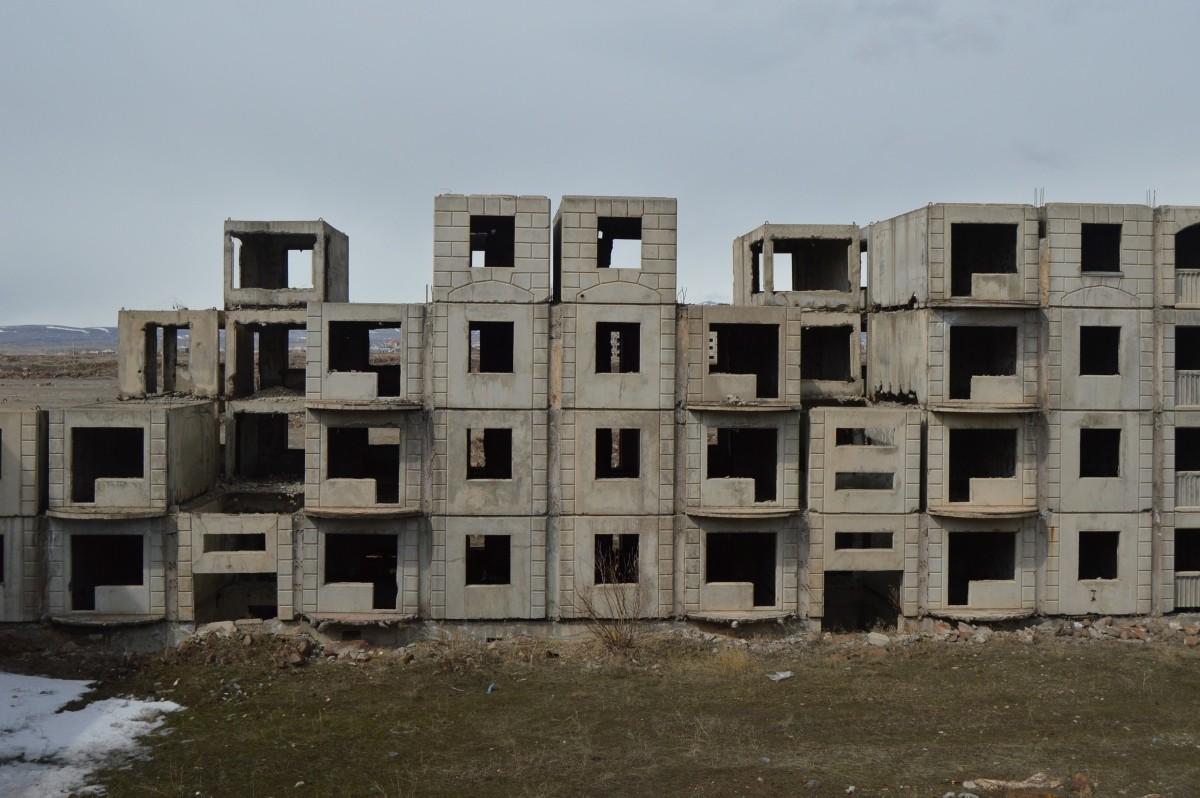
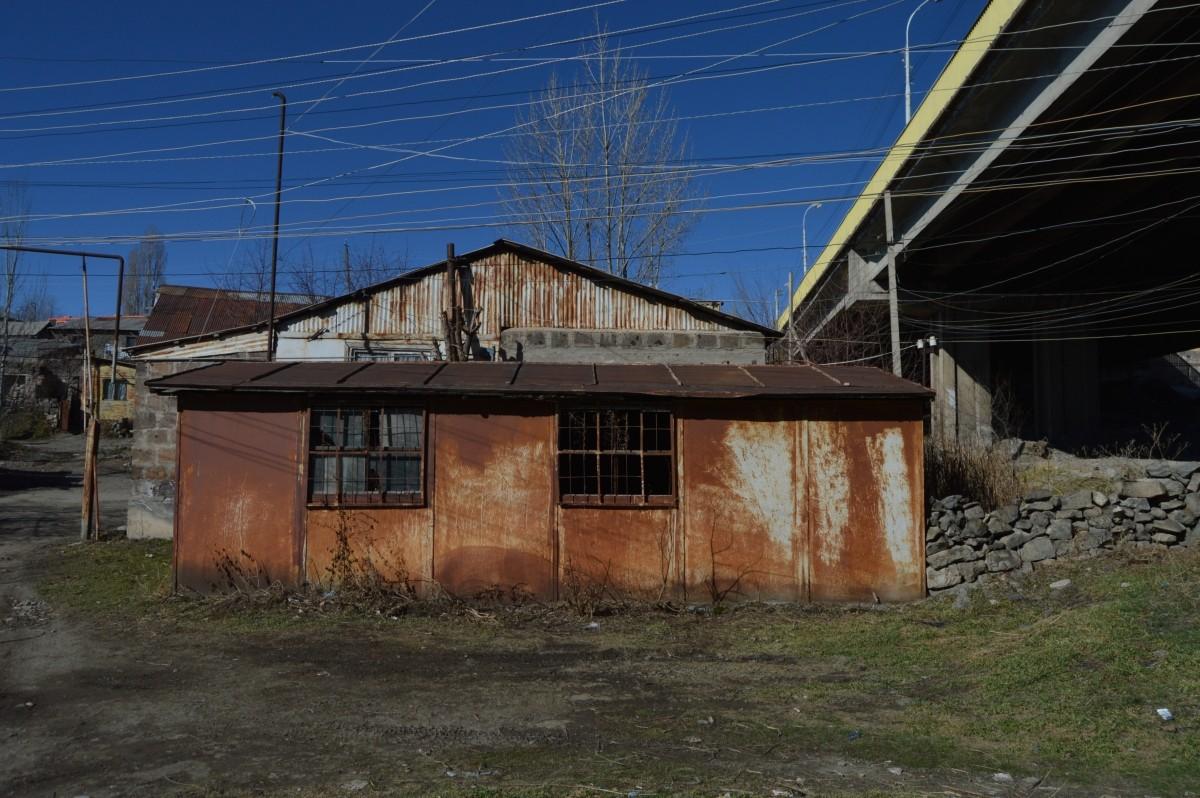
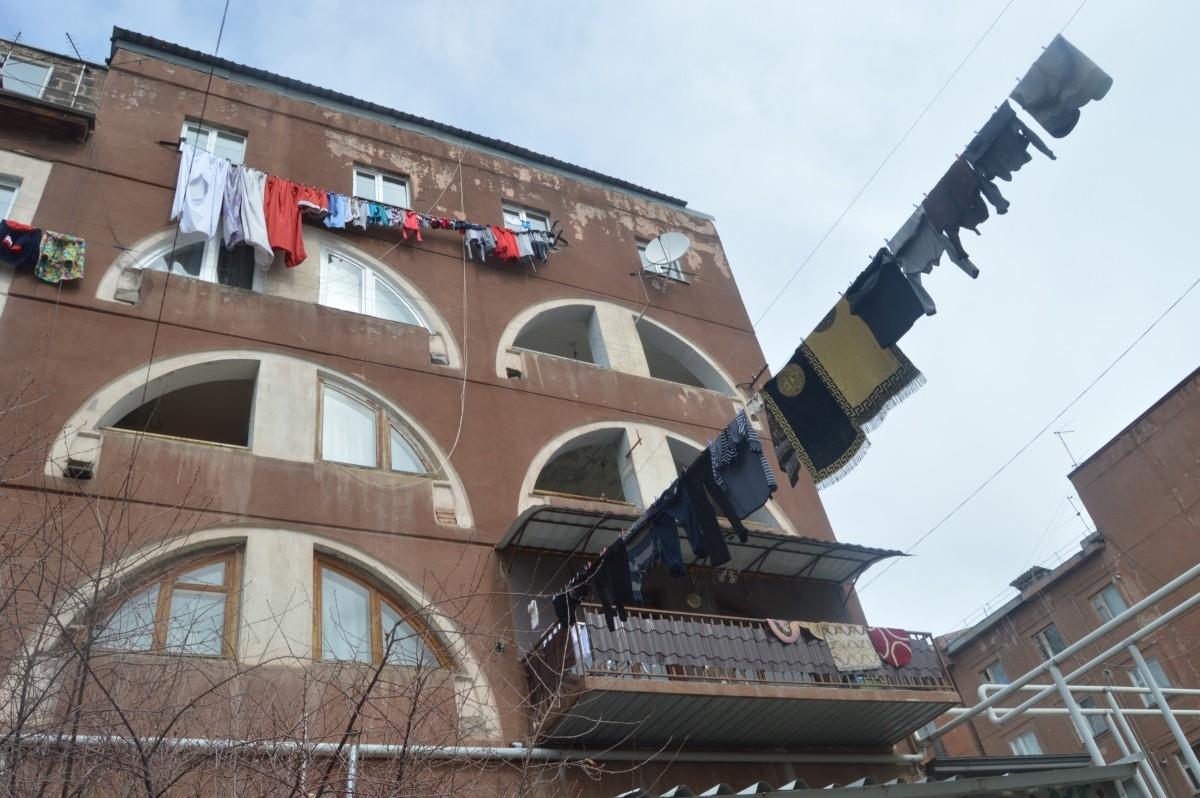
Comments (1)
Write a comment